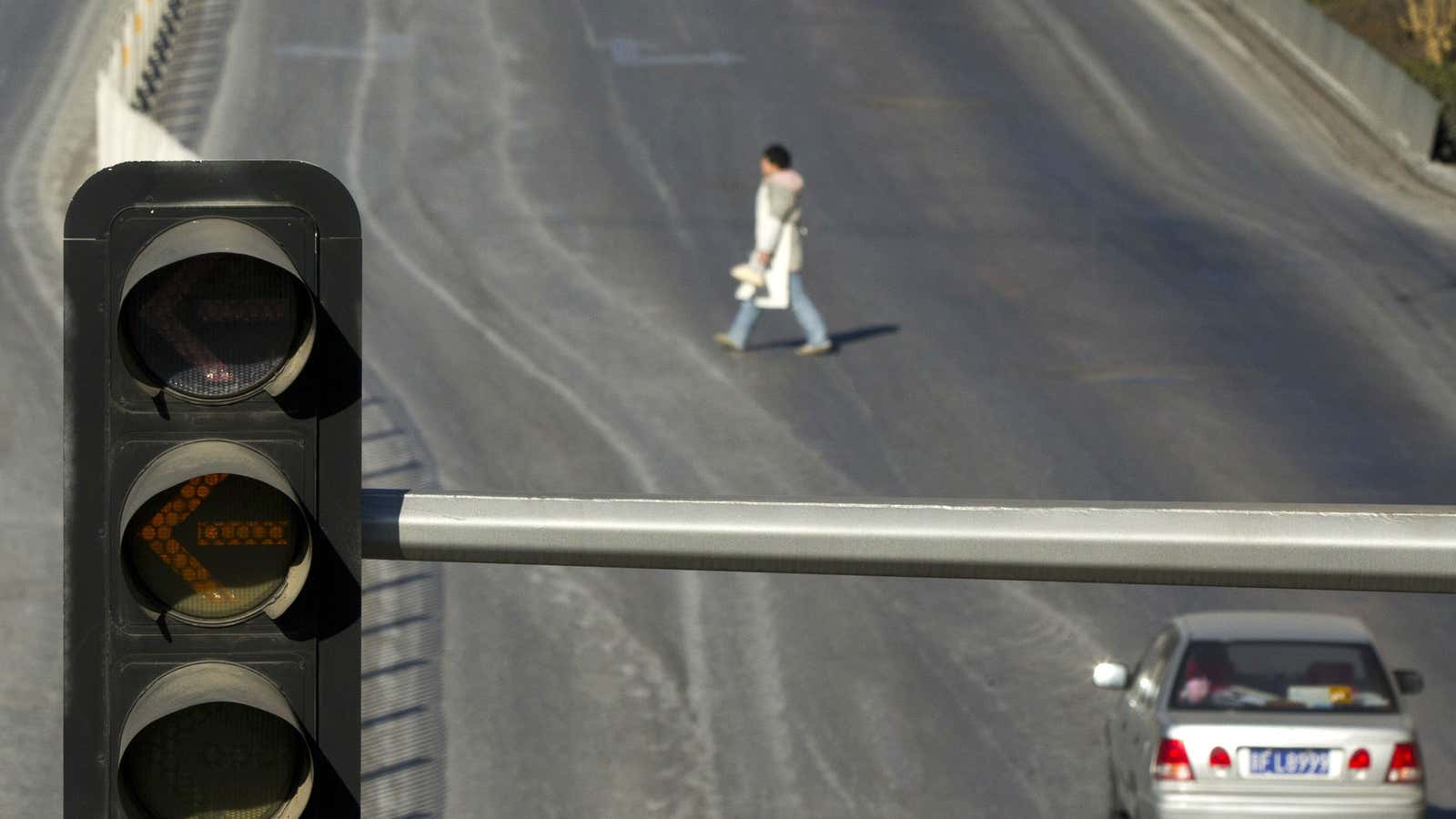Chinese officials are cracking down on illegal street crossing, in an attempt to instill rule of law in Chinese cities known for their chaotic roadways. The latest urban center being subjected to the crackdown is Shenzhen, where at least 2,000 people have already been fined for jaywalking, or what is described in Mandarin as “Chinese-style street crossing.” In the province of Zhejiang, over 8,000 were charged for the offense in March.
Jaywalking in China, when pedestrians disregard traffic signals and walk into the street (usually in groups), contributes heavily to traffic jams and bottlenecks in China’s urban areas. Beijing, and provinces like Hebei, Inner Mongolia, Zhejiang and Hainan have already started charging jaywalkers with fines of up to 100 renminbi ($16) or assignments to help direct traffic as punishment.
Some analysts think the issue is more cultural than logistical. Chinese state media have attributed the jaywalking to a national short-sightedness or lack of principles. Others say it reflects the population’s disregard for rule of law.
But according to Chinese writer Yuan Xiaobin, the high incidence of jaywalking reflects the government’s lack of attention to pedestrian rights. As Yuan explained in an editorial last year, Chinese police and officials have little regard for the millions of Chinese who rely on biking and walking to get around. In March, a video of a police car driving away after hitting a pedestrian went viral. In the same month, officials in the city of Nanning built a bridge over a walking path with such a low clearance that residents had to duck to pass under it. Because drivers rarely yield to pedestrians (even though it’s required by law), Chinese jay walking is a kind of collective action to force cars to stop.
China’s traffic infrastructure doesn’t help. As Yuan pointed out, in Germany traffic lights are programmed to last no longer than 60 seconds, which is the amount of time studies found that German residents would wait to cross the street. In China, a study from Tongji University in Hangzhou found that pedestrians waited up to 90 seconds for a signal to walk. Even when they get a walk signal, there’s no telling when cars will actually allow pedestrians to cross the road.




